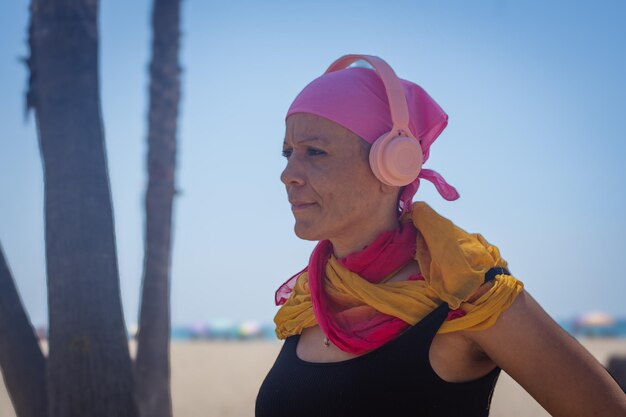Understanding Hodgkin Lymphoma: Is It Curable?
The journey of understanding a cancer diagnosis, especially Hodgkin Lymphoma, can often feel daunting. While the intricacies of medical terms and treatments may seem overwhelming, understanding whether Hodgkin Lymphoma is curable is a crucial question many patients and their loved ones seek to answer. Here, we'll delve into the intricacies of Hodgkin Lymphoma, explore its treatment options, and evaluate the potential for a cure—all while maintaining a reader-friendly narrative.
What Is Hodgkin Lymphoma?
Hodgkin Lymphoma is a type of blood cancer that affects the lymphatic system, which is part of the body's immune system. It is characterized by the presence of Reed-Sternberg cells, an abnormal type of B lymphocyte. There are several subtypes of Hodgkin Lymphoma, with the most common being Classical Hodgkin Lymphoma.
Key Characteristics of Hodgkin Lymphoma
- Symptoms: Common symptoms include painless swelling of lymph nodes, persistent fatigue, night sweats, unexplained weight loss, and fever.
- Diagnosis: It is typically diagnosed through a biopsy of the affected lymph node, followed by imaging tests such as CT scans or PET scans to determine the cancer's stage.
Is Hodgkin Lymphoma Curable?
Prognosis and Cure Rates
The good news is that Hodgkin Lymphoma is one of the most curable forms of cancer. With advances in treatment, especially those combining chemotherapy and radiotherapy, the prognosis has significantly improved over recent decades.
- Survival Rates: The overall 5-year survival rate for Hodgkin Lymphoma is about 87%. This means that 87% of people are expected to live for at least five years post-diagnosis.
- Factors Influencing Cure: The likelihood of a cure depends on various factors, including the stage of cancer at diagnosis, the patient’s age and overall health, and how well the cancer responds to initial treatments.
Treatment Options
Effective treatment for Hodgkin Lymphoma typically combines different modalities depending on the stage and individual patient needs.
Chemotherapy
- ABVD Regimen: The most common chemotherapy regimen used for Hodgkin Lymphoma is ABVD, comprising Adriamycin, Bleomycin, Vinblastine, and Dacarbazine.
- Side Effects: While effective, chemotherapy comes with potential side effects, such as fatigue, nausea, hair loss, and increased risk of infections.
Radiotherapy
- Often used in conjunction with chemotherapy, radiotherapy involves using high-energy rays to target and destroy cancer cells. This approach is particularly beneficial for localized stages of Hodgkin Lymphoma.
Targeted Therapies and Immunotherapy
- Brentuximab Vedotin: A targeted therapy option specifically used for certain stages of Hodgkin Lymphoma.
- Checkpoint Inhibitors: Drugs like nivolumab or pembrolizumab have been used in cases where traditional therapies fail.
A Deeper Dive: Factors Affecting Treatment and Cure
Early vs. Advanced Stages
- Early Stages (I-II): Patients diagnosed in the early stages generally have a higher likelihood of achieving a complete cure. Treatments are less aggressive and focus on minimizing long-term health impacts.
- Advanced Stages (III-IV): While more challenging, advanced-stage Hodgkin Lymphoma can still be cured, although it might require more intensive treatment regimens.
Age and Overall Health
- Younger patients tend to respond better to treatment and have fewer long-term side effects.
- Overall health profile, including pre-existing conditions, can affect both treatment strategies and outcomes.
Living Beyond Hodgkin Lymphoma
Achieving remission and moving past Hodgkin Lymphoma is a significant milestone, but it often comes with its set of challenges.
Follow-up Care
- Regular Monitoring: Periodic scans, blood tests, and physical evaluations help monitor for relapses.
- Managing Side Effects: Understanding and managing the long-term side effects of treatments, such as potential cardiovascular issues or secondary cancers, is critical.
Physical and Emotional Rehabilitation
- Support Systems: Engaging with support groups and therapy can provide emotional resilience and aid recovery.
- Lifestyle Adjustments: Adopting healthier lifestyle choices, such as proper nutrition and regular exercise, can support overall well-being.
Innovations in Treatment: The Future of Hodgkin Lymphoma
Advancements in Research
- Ongoing research is constantly improving our understanding of Hodgkin Lymphoma. Personalized medicine based on genetic makeup and disease characteristics is paving the way for more effective treatments with fewer side effects.
Clinical Trials
- Patients have opportunities to participate in clinical trials, offering access to cutting-edge treatments that could offer better outcomes.
Wrapping It All Together: A Message of Hope
While any cancer diagnosis is serious, the journey of those with Hodgkin Lymphoma is often marked by successful treatment and long-term survival. Advances in medical treatments have shifted Hodgkin Lymphoma from a life-threatening disease to one with a high potential for full recovery.
Key Takeaways:
- Hodgkin Lymphoma has high cure rates with current treatment options.
- Early diagnosis and personalized treatment plans play a critical role in successful outcomes.
- Continuous advancements in research and treatments offer ongoing hope for those affected by Hodgkin Lymphoma.
For anyone facing this diagnosis, it's important to engage with healthcare teams actively and stay informed about new and existing treatment options.
Summary
- 🎯 Curability: Hodgkin Lymphoma is highly curable, especially when diagnosed early.
- 🧪 Treatment: Combines chemotherapy, radiotherapy, and sometimes targeted therapies.
- 📊 Survival Rate: Approximately 87% five-year survival post-diagnosis.
- 👨⚕️ Follow-up Care: Regular check-ups essential for detecting recurrence.
- 🔬 Innovations: Research and clinical trials continue to improve treatments.
- 💪 Hope: Advances offer a promising outlook for long-term survival.
Understanding these elements allows patients and their families to better navigate their journey with Hodgkin Lymphoma, emphasizing hope and healing.
